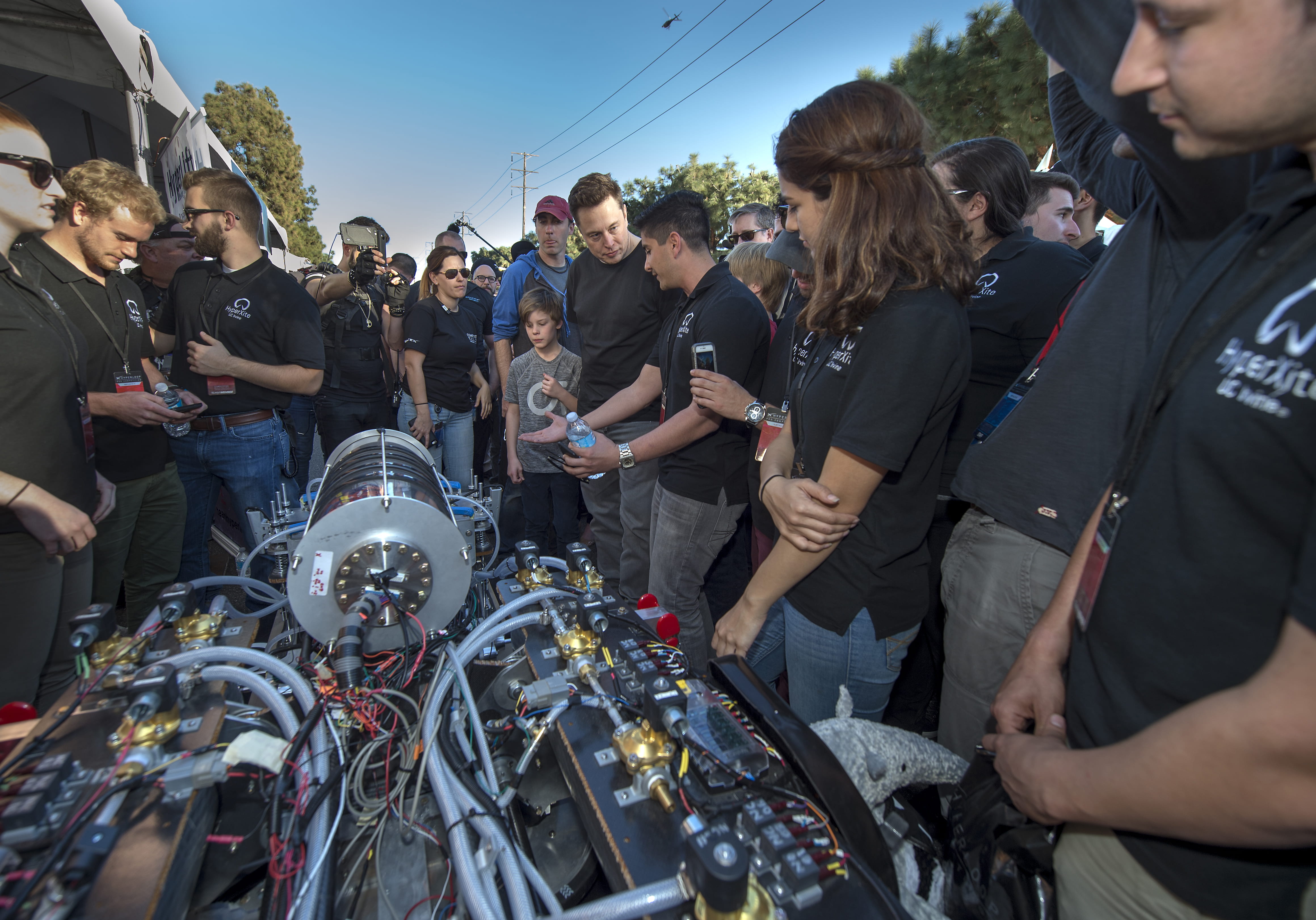Pod pride
UCI team shows off its prototype for Hyperloop transportation system at competition

After nearly 18 months of preparation, a UCI student team put up its sleek, high-tech HyperXite “pod” vehicle against entries from 27 other teams from around the world at the Hyperloop Pod Competition, held the last week of January at SpaceX headquarters in Hawthorne.
The Anteaters didn’t bring home any awards, but that wasn’t the point. The prototype pods on display revealed fantastic possibilities for the Hyperloop, a futuristic transportation system proposed in 2013 by Elon Musk, CEO of SpaceX and Tesla. He envisions pill-shaped vessels carrying passengers through an elevated near-vacuum tube at speeds in excess of 700 mph. If realized, the Hyperloop could shuttle people between Los Angeles and the San Francisco Bay Area in less than an hour.
“The competition weekend was stressful but really fun,” says HyperXite project manager Mackenzie Puig-Hall, a UCI senior in mechanical engineering. “It was a great environment to work in because we got to see what all the other teams were doing, and it was really cooperative. This competition has never been about winning or losing. It’s always been about how, together, we can make the Hyperloop a reality.”
In a design contest at Texas A&M University just over a year ago, HyperXite placed fifth in a field of about 120 teams, making it eligible to enter an actual prototype at the Hyperloop Pod Competition. The group is now planning to have its vehicle evaluated on the Hyperloop test track near SpaceX headquarters and intends to take part in the speed-centered Hyperloop Pod Competition II this summer.
Unlike most of its rivals, which use magnetic levitation to hover above the track, the HyperXite pod employs an air-based system. Its most striking feature is the streamlined exterior, made of strong, lightweight carbon fiber. Students spent months preparing the molds necessary for the shell, which was fabricated by ADM Works, one of many Orange County-area businesses supporting the project. The aerodynamic skin conceals an intricate network of wires, tubes, air canisters and other components that enable the vehicle to accelerate, travel at high speed and then magnetically brake to a stop.
HyperXite team members – all of them undergraduates from The Henry Samueli School of Engineering and the Donald Bren School of Information & Computer Sciences – and the UCI faculty who help guide them view participation in the Hyperloop contest as a bridge to the future.
“More important than the result of the competition is what these students are getting out of this experience,” says Gregory Washington, the Stacey Nicholas Dean of Engineering. “They’re going to go out into industry and do great things. That’s what really matters in the end.”










